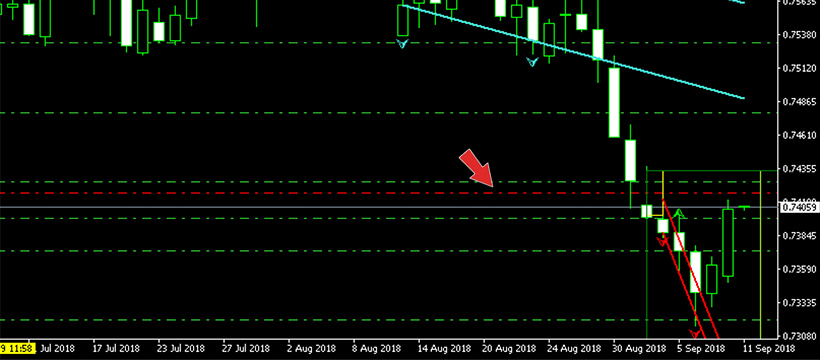Is Your Stop Loss Too Tight? Here's How to Find Out
September 17, 2018

Stop Loss is one of the most important Risk Management tools. In a nutshell, it allows you to manage risk, an essential practice for surviving in the currency market, where volatility is a typical trait.
However, numerous schools of thought have developed around Stop Loss, some of which support a very prudent approach, while others are accustomed to a riskier but perhaps more profitable style. In this article, we address the issue, giving space to both visions, and finally proposing a middle ground that, at least in theory, should guarantee both profitability and safety (if safety can be spoken of in Forex Trading...)
Why is stop loss important?
Stop Loss is the price level reached at which the trader exits the market, closing the position. In automatic trading, the closure is automatic; in discretionary trading, the closure is manual. But still: in any case, Stop Loss is synonymous with forced exit. An exit that is, in essence, preset. Stop Loss, this is its main feature, is established even before entering the market, i.e., during the trade planning phase.
Stop Loss is important for a very trivial reason: it allows you to preserve capital in case the trade goes wrong. When the trade is generating a loss, Stop Loss allows the trader to exit and limit the damage. In theory (but hopefully also in practice), Stop Loss should correspond to the moment when the trade becomes objectively unrecoverable.
How is Stop Loss identified? This is the million-dollar question. There are numerous methods. The most common one consists of placing the Stop Loss at support levels (if the position is Long) or resistance levels (if the position is Short). Even in this case, however, the margin of discretion is wide. The problem is not solved but only shifted further ahead: at which support or resistance level should the Stop Loss be placed? Daily, weekly, monthly?
Tight stop loss or wide stop loss?
The question is more than legitimate. The doubt, too. Indeed, both tight and wide Stops fulfill the function for which they were designed: to exit the trade and limit losses. But it's obvious that both a too tight Stop and a too wide Stop can cause problems, even a loss of money. Before discussing it at length, it's good to give some definitions.
It's all very simple, actually: a tight Stop Loss means a Stop Loss close to the entry price. A wide Stop Loss means a Stop Loss far from the entry price.
If the Stop Loss is too tight, the trade runs a big risk: that is, exiting the market when the trade is actually "salvageable". Imagine the disappointment: the trade initially proves unsuccessful, the Stop Loss is triggered, the trade is closed, and after some time, the market turns positive. It would be quite frustrating!
The risk is even greater if the Stop Loss is too wide. In this case, the trader keeps the position open well beyond the "unrecoverable" limit, thus losing more money than necessary.
Now, from this simple reasoning, a small but great truth emerges: if you really have to make a mistake, it's better to prefer a stop that's too tight rather than one that's too wide. However, the issue remains on the table, as in a certain sense, a missed gain is equivalent to a loss.
How to identify the stop loss
The goal, therefore, is to identify a balanced Stop Loss: neither too tight nor too wide. Too bad there isn't a single, objective method to derive it, also because it depends on many factors, not least the trading style and the underlying strategy. The only solution is for each trade to find its personal balance. In short, the search for the best Stop Loss is almost a private matter.
So, how to do it? An effective solution is... Trial and error. Obviously, this doesn't mean putting your capital at risk. There are safe tools for testing this kind of maneuver. There are two alternatives: either act on the real market using demos, or act "in the past" using backtests.
In this second case, you download data from past sessions and try out the various approaches, i.e., the various Stop Losses (tight, tighter, wide, wider, etc.) in what is, to all intents and purposes, a simulation. Once you've found the setup that best suits your strategy, you can "bring it" to real trading as well.
Of course, it's not a simple or quick method. However (along with the practice of demos), it's the only one capable of offering certain results.




